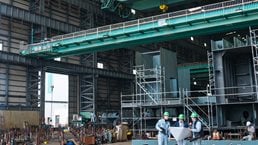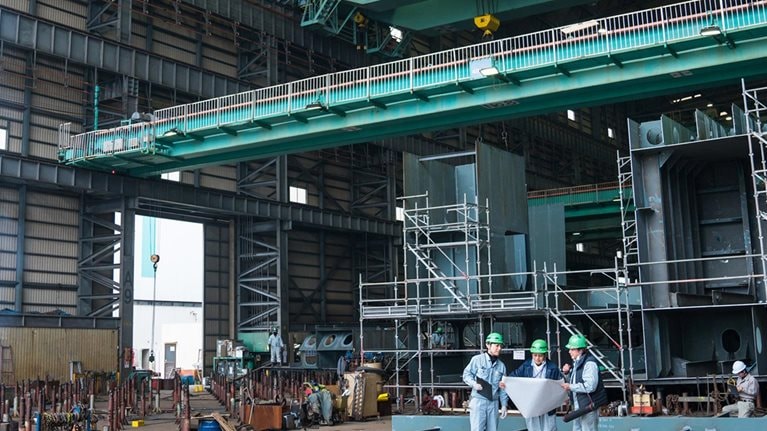Managing capital expenditure has not been high on the agendas of most CEOs in the pharmaceutical industry. Although capital spending by the top 50 companies reached $40 billion in 2017, it was equivalent to just 6 percent of their revenues, and much of it was deemed essential to delivering important drugs. In short, companies have had little incentive to cut back, which might explain why only half of big pharma companies have a group dedicated to managing capital expenditure.1
Stay current on your favorite topics
Yet times are changing. With drug prices under pressure and investment needed to improve the value of drug pipelines, capital-expenditure management warrants greater attention.
Companies do, of course, pay attention to large, multimillion-dollar projects, although the frequency with which they run over time and budget suggests the need for more. (We examined more than 20 projects to build similar new production facilities and found that while some companies completed the work within three years, others took as long as six.) But what companies tend to ignore are the smaller, recurring expenditure projects, often undertaken to maintain or improve existing facilities. Perhaps surprisingly, this is where most value potential lies.
This is because big projects are few and far between, whereas at any one time, a large pharma company could be managing hundreds of smaller projects. This recurring spending accounts for 70 percent of total capital expenditure in mature sectors of the industry. Even in faster-growing sectors, such as biopharma, it accounts for 50 percent. Yet the relatively small size of each project means their collective value is often overlooked. Our analysis suggests that if a typical big pharma company shaved 20 percent of costs from just half of the projects in its portfolio—a feasible goal—it would save $200 million a year that could be invested back into R&D or used for acquisitions.2
Importantly, however, better management of these smaller projects does not mean simply cutting costs—too often, the starting and finishing points for those scrutinizing capital expenditure. Companies also need to consider which projects create the most value or prevent value destruction. Cutting back a costly project intended to increase product margin significantly clearly does not make sense. But curbing projects with little value does. One leading company was spending $40 million on a total of 75 projects at just two of its plants, but analysis showed that 70 percent of the spending at one plant and 85 percent at the other were creating scant value, as the aim was to add new capacity, even though existing capacity was underused and demand was expected to fall.
By benchmarking companies’ capital-expenditure performance by value as well as cost, we can reveal the extent of the improvements available in recurring expenditure, where they might lie, and how to capture them.
Costs and value—room for improvement
To show the potential in cost improvement, we examined capital expenditure by different companies at a total of 13 production sites located around the world over a three-year period.3 The benchmarking exercise included more than 2,000 data points across the production process, from weighing components to packaging. By using McKinsey’s approach to benchmarking in the pharmaceutical industry that normalizes metrics, we were able to make meaningful comparisons between sites.4
The results showed that the normalized cost per unit of production differed by a factor of ten between some sites. In other words, some companies achieved the same results with much lower capital expenditure—a difference that could not be explained by the age of the equipment on site.5 McKinsey’s capital-performance index (CPI), which gauges the value of different types of capital expenditure, suggests other explanations. It works like this.
Would you like to learn more about our Capital Projects & Infrastructure Practice?
Each site’s spending was allocated to one of four different types of projects: those that grow capacity, those that ensure regulatory compliance, those that sustain current assets, and those that improve performance. A fifth, smaller category, catches any other spending.
Even a high-level examination of how spending was distributed in these categories indicates where improvements might lie. Take spending on growth projects. Exhibit 1 shows that this was by far the biggest spending category, accounting for 40 percent of the total (the median figure). Growth projects are typically the most expensive kind, which explains why they account for the greatest proportion of spending. Yet our analysis also shows that asset utilization at the sites studied was just 34 percent and median overall equipment efficiency (OEE) was 32 percent. As a result, much of the growth spending was misplaced. For many of the companies in our analysis, investments in comparatively cheaper performance projects to improve OEE would have delivered more value. But performance projects accounted for just 14 percent of expenditure.

Digging deeper within each category, more detail can be revealed on where improvements might lie.
This is done by determining the drivers of value for each project type. Higher labor productivity drives value from money spent on performance projects, for example. Reducing downtime drives value from sustainability expenditure. And avoiding complaints, or lowering greenhouse-gas emissions, preserves value in compliance projects by safeguarding a company’s reputation, cutting the cost of permits, or not incurring fines. The CPI includes 16 value drivers that are weighted according to their value-creation potential. By scoring the extent to which capital expenditure at a site improves each driver, then aggregating the results, each site can be ranked according to the value of its expenditure.6
Exhibit 2, which plots the normalized capital expenditure per unit of production at each of the 13 sites as well as the value of that spending, shows high variability in the performance of different sites. Importantly, it also makes clear that higher spending does not necessarily translate into higher value. Indeed, three sites, located in the top-left quadrant of the exhibit, extract the highest value from the lowest expenditure. Those in the top-right quadrant have scope to reduce costs, while those in the bottom left could make their money work much harder. The others have scope to improve in both dimensions.

Variability is seen within spending categories too. For example, the third of company sites that score highest on the CPI in asset sustainability spend four to five times less than the third of companies that score lowest.
Capturing the rewards
By conducting a similar benchmarking exercise at companies’ own sites, pharmaceutical companies can compare their performance with that of their peers, then adjust their portfolios of projects so they are structured to deliver maximum value at lowest cost.
The exercise can show whether improvement at a site lies in scrapping costly options that deliver little value or targeting spending on those that raise value. It can also indicate just where that value might lie. If, for example, a site scores low on asset sustainability because of the lengthy time it takes to make repairs (the mean time to repair is one of the value drivers of asset sustainability), the site manager has a good idea where investments will have impact.

Capital project value improvement in the 21st century: Trillions of dollars in the offing
Once the portfolio has been rebalanced, companies can begin to prioritize work systematically.
Pharmaceutical companies benefit from leveraging the approach applied by other capital-intensive industries, such as oil and gas, mining, and chemical, in which capital-expenditure management has long been key to performance. This approach begins with a review of all projects to ascertain their net present value (NPV) and their impact on a site’s operational risks. The portfolio is then “scrubbed.” This means assessing which future projects will prevent value destruction by addressing the high operational risks of a site; which ones have high value-creation potential; which are borderline, in that value creation is minimal or some way off; and which have no value. Spending is then prioritized accordingly. Exhibit 3 illustrates such an assessment.

How a company then chooses to act will depend on its circumstances. In this example, planned projects worth some $8 million will have little impact on NPV so will be of low priority, if pursued at all. A company with plenty of resources might choose to do the borderline projects. But a cash-strapped company would focus only on those with high operational risks—or highly profitable ones. Typically, many of the high-risk projects will be linked to compliance, while many of the most profitable ones will entail improving the performance of current assets.
Once the portfolio has been scrubbed, companies can consider how to reduce expenditure on individual projects while maintaining their value. Measures could include design optimization, which evaluates trade-offs that can be made to lower costs, identification of the minimal technical solution required, or deployment of a range of other cost-saving tools.
The project-management team
Even with the right tools, progress will be hard if a company does not have a well-qualified and well-resourced capital-expenditure-management team.
Our benchmarking analysis made clear that management of recurring expenditure often lacks the discipline afforded to larger projects. Insufficient data are collected to evaluate and classify projects properly, for example, with only the simplest economic metrics ever used (such as the payback period), while the impact on operational risk is ignored and the project goal poorly defined. So although more than 90 percent of smaller projects are officially approved, they are pooled together in the annual budget as capital expenditure and sanctioned as a job lot if funds permit, rather than assessed individually. Post-execution evaluation is rarer still.
As stated earlier, the problem often lies in the fact that many pharma companies do not have a dedicated capital-expenditure-management team. Instead, they rely on the engineering group, which will undertake individual projects but seldom has an overview of the project portfolio. In addition, project managers are in short supply. Those at the 13 sites we examined handled 17 projects in a single year (the median figure). One handled as many as 127. Much depends on the size of each project, but as a rule of thumb, seven is more than enough. Perhaps not surprisingly then, 19 of the 27 people we asked at large companies whose jobs included capital-expenditure management said they felt their company had room to improve the evaluation and management of projects.
Most pharma companies today cannot afford to ignore the value of better capital-expenditure management—and particularly, the value that lies hidden within the hundreds of smaller projects they undertake. For most, the first step is likely to be a comparison of their performance relative to that of their peers to assess the scope for improvement. If improvements are in order, a capable capital-expenditure-management team can then begin to dig into the company’s spending to make sure it is working as hard as it should. The likelihood is, the portfolio of small capital-expenditure projects will deliver big rewards.

